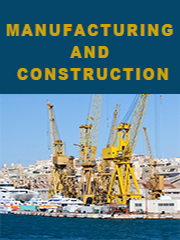Report overview
Automated Material Handling Equipment (or short as AMHE) can play an essential role in modern factories for work-in-process storage and offer the advantages of improved inventory control and cost-effective utilization of time, space and equipment.
Warehouse material handling approaches are very commonly adopting Automated Material Handling Equipment, in which mainly includes: automated storage retrieval system, automatic guided vehicle, conveyor and sorter system.
This report aims to provide a comprehensive presentation of the global market for Automated Material Handling Equipment, with both quantitative and qualitative analysis, to help readers develop business/growth strategies, assess the market competitive situation, analyze their position in the current marketplace, and make informed business decisions regarding Automated Material Handling Equipment. This report contains market size and forecasts of Automated Material Handling Equipment in global, including the following market information:
Global Automated Material Handling Equipment Market Revenue, 2018-2023, 2024-2029, ($ millions)
Global Automated Material Handling Equipment Market Sales, 2018-2023, 2024-2029, (Units)
Global top five Automated Material Handling Equipment companies in 2022 (%)
The global Automated Material Handling Equipment market was valued at US$ 40130 million in 2022 and is projected to reach US$ 62780 million by 2029, at a CAGR of 6.6% during the forecast period. The influence of COVID-19 and the Russia-Ukraine War were considered while estimating market sizes.
Global Automated Material Handling Equipment key players include Daifuku, Schaefer, KION GROUP(Dematic), Murata Machinery, Vanderlande, etc. Global top five players hold a share about 35%.
Europe is the largest market, with a share about 40%, followed by North America and China, having a total share about 35 percent.
In terms of product, Robotic Systems is the largest segment, with a share about 30%. And in terms of application, the largest application is Food and Beverage, followed by Manufacturing, Pharmaceutical, Airport, etc.
We surveyed the Automated Material Handling Equipment manufacturers, suppliers, distributors and industry experts on this industry, involving the sales, revenue, demand, price change, product type, recent development and plan, industry trends, drivers, challenges, obstacles, and potential risks.
Total Market by Segment:
Global Automated Material Handling Equipment Market, by Type, 2018-2023, 2024-2029 ($ Millions) & (Units)
Global Automated Material Handling Equipment Market Segment Percentages, by Type, 2022 (%)
Automated Storage and Retrieval Systems
Automated Conveyor and Sortation Systems
Automated Guided Vehicle Systems
Robotic Systems
Global Automated Material Handling Equipment Market, by Application, 2018-2023, 2024-2029 ($ Millions) & (Units)
Global Automated Material Handling Equipment Market Segment Percentages, by Application, 2022 (%)
E-commerce and Retail
Food and Beverage
Manufacturing
Pharmaceutical
Airport
Others
Global Automated Material Handling Equipment Market, By Region and Country, 2018-2023, 2024-2029 ($ Millions) & (Units)
Global Automated Material Handling Equipment Market Segment Percentages, By Region and Country, 2022 (%)
North America
US
Canada
Mexico
Europe
Germany
France
U.K.
Italy
Russia
Nordic Countries
Benelux
Rest of Europe
Asia
China
Japan
South Korea
Southeast Asia
India
Rest of Asia
South America
Brazil
Argentina
Rest of South America
Middle East & Africa
Turkey
Israel
Saudi Arabia
UAE
Rest of Middle East & Africa
Competitor Analysis
The report also provides analysis of leading market participants including:
Key companies Automated Material Handling Equipment revenues in global market, 2018-2023 (Estimated), ($ millions)
Key companies Automated Material Handling Equipment revenues share in global market, 2022 (%)
Key companies Automated Material Handling Equipment sales in global market, 2018-2023 (Estimated), (Units)
Key companies Automated Material Handling Equipment sales share in global market, 2022 (%)
Further, the report presents profiles of competitors in the market, key players include:
Schaefer
Daifuku
Dematic
Murata Machinery
Vanderlande
Mecalux
Beumer group
Fives group
Swisslog AG
Intelligrated
Knapp
Kardex AG
TGW Logistics
Grenzebach
Witron
Viastore
System Logistics
Outline of Major Chapters:
Chapter 1: Introduces the definition of Automated Material Handling Equipment, market overview.
Chapter 2: Global Automated Material Handling Equipment market size in revenue and volume.
Chapter 3: Detailed analysis of Automated Material Handling Equipment manufacturers competitive landscape, price, sales and revenue market share, latest development plan, merger, and acquisition information, etc.
Chapter 4: Provides the analysis of various market segments by type, covering the market size and development potential of each market segment, to help readers find the blue ocean market in different market segments.
Chapter 5: Provides the analysis of various market segments by application, covering the market size and development potential of each market segment, to help readers find the blue ocean market in different downstream markets.
Chapter 6: Sales of Automated Material Handling Equipment in regional level and country level. It provides a quantitative analysis of the market size and development potential of each region and its main countries and introduces the market development, future development prospects, market space of each country in the world.
Chapter 7: Provides profiles of key players, introducing the basic situation of the main companies in the market in detail, including product sales, revenue, price, gross margin, product introduction, recent development, etc.
Chapter 8: Global Automated Material Handling Equipment capacity by region & country.
Chapter 9: Introduces the market dynamics, latest developments of the market, the driving factors and restrictive factors of the market, the challenges and risks faced by manufacturers in the industry, and the analysis of relevant policies in the industry.
Chapter 10: Analysis of industrial chain, including the upstream and downstream of the industry.
Chapter 11: The main points and conclusions of the report.
